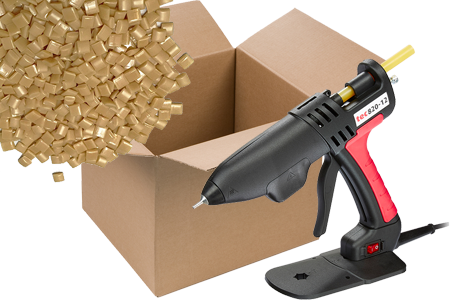Food equipment encompasses a wide range of items including large appliances, cookware, sinks, utensils, benchtop cooking equipment, food prep tables, catering trays, food storage containers, and more. These items can be made of stainless steel, aluminum, ceramic, porcelain, cast iron, plastic, and much more. But these products do not just come in one piece. Handles need to be connected to kitchen knives. Mesh gauze needs to be fitted onto sieves or strainers. And many different components of an oven needed to be bonded together for the appliance to function.
Challenges of Bonding Food Equipment
Kitchen equipment is subject to various stresses like temperature fluctuations, moisture, cleaning, and heavy use. Because of these many stressors, the methods used to bond food equipment should have the durability and functionality to create lasting bonds and optimal results under these conditions.
Another challenge with bonding food equipment is choosing the right adhesive for the type of material. Kitchen equipment can be made of numerous materials, and different materials often require different bonding techniques or adhesives. Plastics, for example, can have a low surface energy that require a specialized adhesive for good adhesion. Smooth surfaces like stainless steel may also require special adhesives, additives, or surface preparation to get a lasting bond.
Besides choosing the right adhesive for the materials and environment, perhaps the biggest challenge with bonding kitchen equipment is finding a product that is safe for use with food. Whether for a commercial kitchen or the average home chef, cooking tools and equipment need to be bonded with something that is FDA-approved. The FDA has regulations on everything from products used in food manufacturing to products used in food equipment because even in trace amounts, a toxic adhesive can have a negative impact on someone's health over time.
Methods of Bonding Kitchen Equipment
There are a few different ways to bond food equipment safely with the right products.
Mechanical fasteners- Mechanical fasteners like rivets and screws are a tried-and-true method used to bond kitchen equipment like tables, appliances, stainless steel sinks, and large equipment. They do not require a cure time, but they can add a large amount of weight to the finished product that may not be desirable. They also may not be able to withstand corrosion or high heat.
Glue and Sealants- Some glue and sealants can also be used with cooking equipment or kitchen tools. Glues can be formulated to have a wide range of properties such as resistance to moisture, extreme temperatures, corrosion, and impact. The downfall with gluing food equipment is that many are not safe for food contact. You need to find a specified food-safe adhesive. Sealants can also be messy and require a long time to cure.
Tapes- Tapes are a relatively newer way to bond food equipment since products that are FDA-approved have hit the market. Tape can provide strong and durable bonds to a wide range of substrates, including low surface energy substrates, without adding a lot of weight. They are also easy to apply and evenly distribute stress.
Of course, bonding capabilities vary significantly from product to product, so always check the technical data sheet (TDS) for a product or consult an expert.
Product Recommendations
Because there are many factors to consider, it is important that you not only choose the right method to bond your kitchen equipment, but also the right product. To help, our adhesive experts are sharing some of the top products to bond food equipment safely and effectively.
Sealant
The ASI 600 heat-resistant sealant is known for its ability to withstand temperatures up to 600 degrees Fahrenheit, but that is not all it is good for. The product also meets FDA Regulation No.21 CFR 177.2600 requirements for food-grade applications. Together, these properties make it great for use with industrial ovens, commercial grills, appliance gaskets, and much more.
Tape
Part of 3M'S VHB tape series, there are three products that have FDA applicability for indirect contact with food per 21 CFR 175.105. They are also designed to bond challenging substrates like stainless steel, polypropylene, or polyethylene. These 3M VHB food-safe tapes can replace mechanical fasteners and be used with a wide range of food-related equipment like stainless steel sinks, tables, cabinets, shelving, middleware appliances, and large appliances. They are automation friendly as well as fast and easy to apply. They also come in three different thicknesses - 1.1 mm, 0.6 mm, and 1.6 mm.
Hot Melt
If you are looking for an adhesive for packaging that is also food-safe, we recommend Infinity Bond M2080. While some hot melts are safe for indirect food contact, this product is safe for direct food contact. It is also low odor and clean melting with a high-quality pot stability that ensures it will last. With a fast set time, it is also great for high-volume products.
Bonding Food Equipment & Need Help?
Choosing the best method to bond food equipment depends on various factors including the materials being bonded, the specific environmental conditions, the cost, the application process, and more. If you need helping find the right product for the job, we are here. Our adhesive experts can provide you with a personalized product recommendation whether it is an adhesive, sealant, or tape. We may even be able to send you a free sample to test. Just contact us today to get started.










